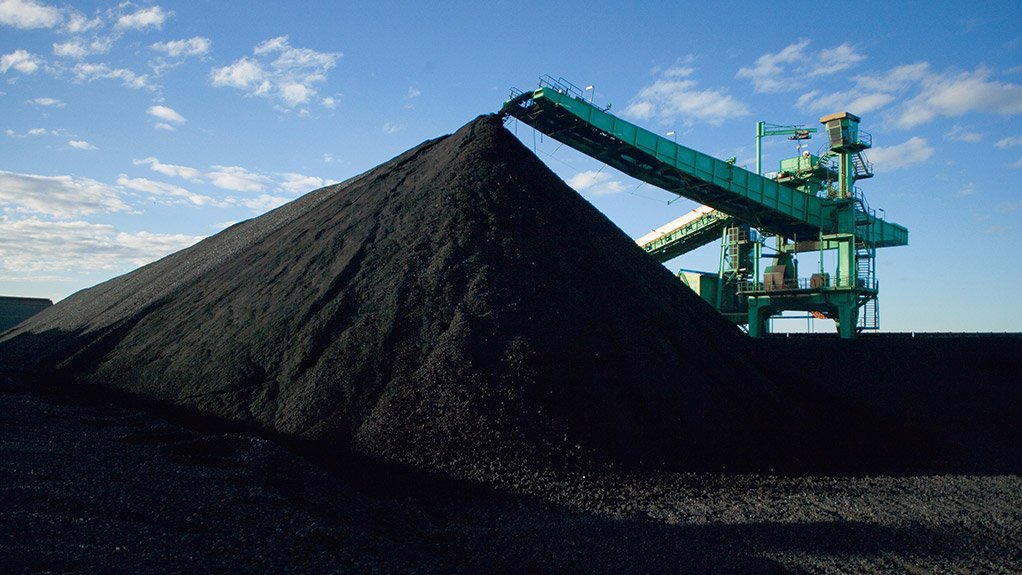BHP's coal and copper production falls in Sept quarter
PERTH (miningweekly.com) – Wet weather conditions have hit diversified giant BHP’s coal operations in the September quarter, with production of metallurgical coal dropping by 19% on the previous quarter, and energy coal by 33%.
The miner on Wednesday reported that metallurgical coal production for the quarter ended September reached 6.7-million tonnes, which was down 1% on the previous corresponding period, on the back of lower volumes resulting from significant wet weather conditions, the mining of higher strip ratio areas, a planned longwall move at the Broadmeadow operation and a planned washplant maintenance at the Blackwater, Goonyella and Saraji operations.
Energy coal production for the September quarter reached 2.6-million tonnes, which was down 38% on the previous corresponding period, with the lower volumes also driven by significant wet weather and ongoing labour shortages which have impacted stripping and mine productivity.
BHP on Wednesday reported that iron-ore production for the September quarter was up 1% on the June quarter and 3% on the previous corresponding period, reaching 65.1-million tonnes.
The company told shareholders that the increase in iron-ore production reflected the continued strong supply chain performance and lower Covid-19-related impacts than the previous period, partially offset by wet weather impacts.
The ramp-up of the South Flank operation to full production capacity of 80-million tonnes a year remains on track.
“The South Flank iron ore ramp-up and the Jansen potash project are tracking well, with work ongoing to bring forward first production from Jansen Stage 1 and accelerate Jansen Stage 2,” CEO Mike Henry told shareholders.
Jansen is set for initial production at the end of the 2026 calendar year, and the underground potash mine is expected to produce at a rate of some 4.35-million tonnes a year.
Meanwhile, BHP on Wednesday reported that copper production for the September quarter was down 11% on the June quarter, to 410 100 t, on the back of lower volumes at Escondida, in Chile, owing to lower concentrator feed grade, lower ore stacked in prior months at Pampa Norte reducing cathode production, and lower volumes at Olympic Dam as a result of planned refinery maintenance.
Compared with the previous corresponding period, copper production was up by 9%.
Nickel production for the September quarter was up by 10% on the previous quarter, and by 16% on the previous corresponding period, to 20 700 t, with the previous quarter affected by unplanned downtime at the smelter.
During the quarter under review, BHP also worked to reduce its carbon footprint, Henry said on Wednesday.
“During the quarter, BHP struck a new agreement to supply our Western Australian iron-ore port facilities with renewable electricity, which is expected to halve global greenhouse gas (GHG) emissions from the electricity used, signed a memorandum of understanding with India’s Tata Steel to collaborate on lower GHG emission steelmaking and announced a partnership with Pan Pacific Copper to reduce GHG emissions from maritime transportation, as we take further action to reduce GHG emissions from our operations and support decarbonisation of our suppliers and customers.
“We expect global macro-economic uncertainty in the short term to continue to affect supply chains, energy costs, labour markets and equipment and materials availability. BHP remains well positioned, with a portfolio and balance sheet to withstand external challenges and a strategy positioned to benefit from the global mega-trends of decarbonisation and electrification.”
Comments
Press Office
Announcements
What's On
Subscribe to improve your user experience...
Option 1 (equivalent of R125 a month):
Receive a weekly copy of Creamer Media's Engineering News & Mining Weekly magazine
(print copy for those in South Africa and e-magazine for those outside of South Africa)
Receive daily email newsletters
Access to full search results
Access archive of magazine back copies
Access to Projects in Progress
Access to ONE Research Report of your choice in PDF format
Option 2 (equivalent of R375 a month):
All benefits from Option 1
PLUS
Access to Creamer Media's Research Channel Africa for ALL Research Reports, in PDF format, on various industrial and mining sectors
including Electricity; Water; Energy Transition; Hydrogen; Roads, Rail and Ports; Coal; Gold; Platinum; Battery Metals; etc.
Already a subscriber?
Forgotten your password?
Receive weekly copy of Creamer Media's Engineering News & Mining Weekly magazine (print copy for those in South Africa and e-magazine for those outside of South Africa)
➕
Recieve daily email newsletters
➕
Access to full search results
➕
Access archive of magazine back copies
➕
Access to Projects in Progress
➕
Access to ONE Research Report of your choice in PDF format
RESEARCH CHANNEL AFRICA
R4500 (equivalent of R375 a month)
SUBSCRIBEAll benefits from Option 1
➕
Access to Creamer Media's Research Channel Africa for ALL Research Reports on various industrial and mining sectors, in PDF format, including on:
Electricity
➕
Water
➕
Energy Transition
➕
Hydrogen
➕
Roads, Rail and Ports
➕
Coal
➕
Gold
➕
Platinum
➕
Battery Metals
➕
etc.
Receive all benefits from Option 1 or Option 2 delivered to numerous people at your company
➕
Multiple User names and Passwords for simultaneous log-ins
➕
Intranet integration access to all in your organisation





















